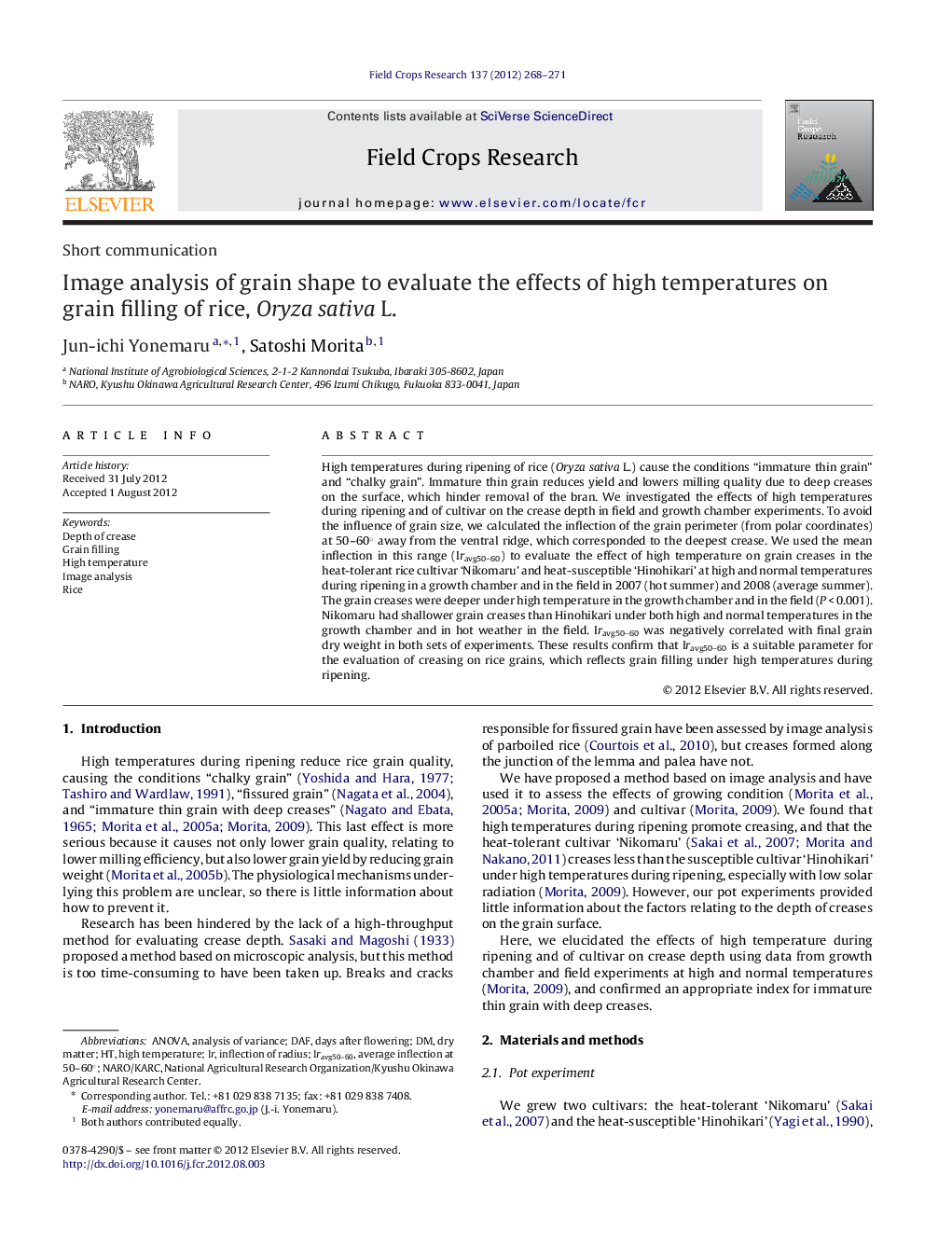| Article ID | Journal | Published Year | Pages | File Type |
|---|---|---|---|---|
| 4510322 | Field Crops Research | 2012 | 4 Pages |
High temperatures during ripening of rice (Oryza sativa L.) cause the conditions “immature thin grain” and “chalky grain”. Immature thin grain reduces yield and lowers milling quality due to deep creases on the surface, which hinder removal of the bran. We investigated the effects of high temperatures during ripening and of cultivar on the crease depth in field and growth chamber experiments. To avoid the influence of grain size, we calculated the inflection of the grain perimeter (from polar coordinates) at 50–60° away from the ventral ridge, which corresponded to the deepest crease. We used the mean inflection in this range (Iravg50–60) to evaluate the effect of high temperature on grain creases in the heat-tolerant rice cultivar ‘Nikomaru’ and heat-susceptible ‘Hinohikari’ at high and normal temperatures during ripening in a growth chamber and in the field in 2007 (hot summer) and 2008 (average summer). The grain creases were deeper under high temperature in the growth chamber and in the field (P < 0.001). Nikomaru had shallower grain creases than Hinohikari under both high and normal temperatures in the growth chamber and in hot weather in the field. Iravg50–60 was negatively correlated with final grain dry weight in both sets of experiments. These results confirm that Iravg50–60 is a suitable parameter for the evaluation of creasing on rice grains, which reflects grain filling under high temperatures during ripening.
► High temperature during ripening deepens creases on the rice grain surface. ► The inflection point of the grain perimeter was measured by image analysis. ► The inflection at the deepest crease indicates the effect of high temperature. ► Heat-tolerant ‘Nikomaru’ had shallower creases than ‘Hinohikari’.
